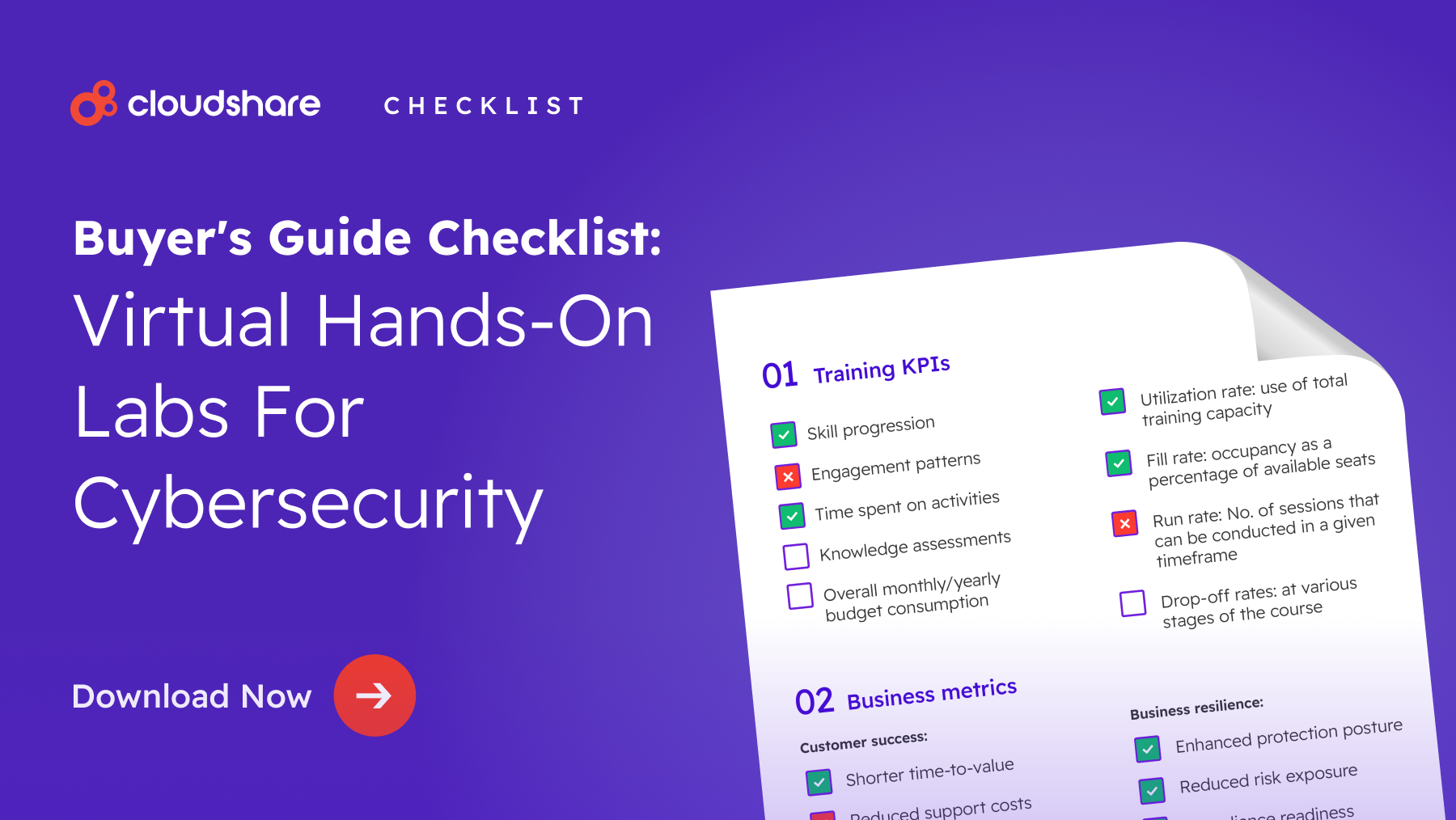
The effectiveness of any training program ultimately comes down to two things. First is the guiding strategy under which the program and its content were developed. Second, there’s the environment in which the training takes place.
Today, we’re going to talk about the second of these key elements in training and development. What constitutes an effective training environment? More importantly, how can you create one for both your customers and your employees?
What Is a Training Environment, Exactly?
A training environment is pretty much exactly what it sounds like. It’s a catch-all term for any setting or platform where individuals work to develop new skills, knowledge, or competencies. Training environments come in many different forms including, but not limited to:
- A traditional physical classroom where an instructor interacts directly with trainees in person.
- Cloud-based training environments that emphasize interactive, hands-on virtual training in lieu of passive learning. This is commonly called a virtual labs.
- Simulated sandbox environments that provide developers with a safe place to experiment with and test software, as well as a learning environment where they can explore everything from a product’s technical features to bugs and security risks.
- Blended learning environments that combine offline and online instruction into a cohesive, interactive learning experience.
Many businesses are increasingly embracing that last one, realizing it can give them the best of both worlds — the social interaction and collaboration of in-person training with the flexibility and accessibility of online training.
The Importance of Creating an Effective Training Environment
The materials are only as effective as the way they’re delivered. What that means is that if your training environment is a poor fit for your content, it could torpedo your entire training initiative.
Employees won’t be able to refine their existing skill set. They’ll be unable to learn about and adapt to change in their industry or develop their knowledge about critical topics like cybersecurity. Professional development may become next to impossible. Rather than a culture of learning and self-improvement, you could be left with a climate of frustration.
A poorly-implemented or poorly-designed training environment may also impact your sales process. Instead of an effective onboarding process, customers may need to rely on your knowledge-base and conversations with your customer support team to learn how your software works. Maybe you’ll get lucky and that’ll be all your customers need.
But it’s far likelier that you’ll end up dealing with customer retention issues and increased churn as they get frustrated with the process along the way.
What are the Characteristics of an Effective Training Environment?
Personalized
Everyone has a different learning style and different learning preferences. Moreover, if we’re talking about customer training, every customer uses your software in a slightly different way. This means that no two training environments should be exactly alike.
Instead, your organization should tailor its training based on factors including, but not limited to:
- The user’s skill and knowledge level prior to training.
- How the user prefers to digest material — do they want to pursue the content at their own pace and on their own time, or would they prefer the guidance of an instructor?
- If relevant, the operating environment in which the user will deploy your software, including infrastructure, key integrations, etc.
- The user’s industry or vertical if it differs from your own.
Hands-On
For your training environment to truly resonate with your users, it needs to be interactive. It needs to provide users with an opportunity to go beyond reading, watching and rote memorization.
If you’re providing a customer with software training, for instance, your training should include an opportunity to experience that software firsthand.
Collaborative
If there’s one thing every business with a culture of learning has in common, it’s that they foster open communication and collaboration. Your training environments should do the same. Participants should always be able to reach out to either your instructors or to fellow users.
Constructive
Training and feedback go hand-in-hand. Your users should, if they so choose, be able to receive immediate guidance on how and where they can improve. More importantly, they should be given the opportunity to provide your business with feedback on the effectiveness of its training.
Usage and behavioral analytics can only tell you so much, after all — direct input from people who’ve completed your training is arguably some of the most valuable information you’ll ever receive.
Accessible
Your users won’t always be able to travel and attend in-person training, nor is it feasible to expect your customer success team to personally be on-site to guide customers through their software deployment. Instead, it’s helpful to have a training environment that can be delivered remotely — through the cloud, for instance. In addition to enabling significantly more flexibility and scalability, this style of virtual training environment also saves your business both time and money.
Build the Right Environment for your Training Program
Whether for the purposes of professional development, cybersecurity training, or customer onboarding, learning cannot happen in a vacuum. Your organization needs to ensure that it can provide the right training environments. Otherwise, you might as well retire your training program altogether.
We’ve now gone over the basics of creating a virtual training environment — the key components that determine whether your training is effective or ineffective.
But that’s not everything you need to know. You might also want to read about the different types of training environments. We’d also recommend learning about the main components of virtual training environments.
Of course, it’s one thing to talk about why training environments are important, but another altogether to actually create those environments. For that, you’ll need to deploy the right training software. Check out our blog detailing the 8 Essential Features for Virtual Training Technology. for a bit of guidance. Finally, once you’re done all that, you might consider reaching out to CloudShare to learn how we provide our customers with simple, powerful, and infinitely scalable virtual IT labs to help them create compelling, custom-tailored training environments for any use case in only minutes.
This blog was written in July 2023 and updated in September 2024.




